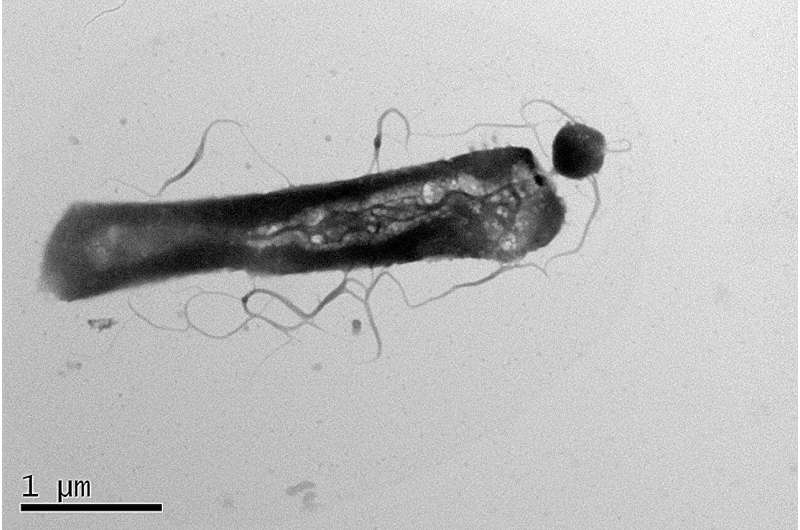This article has been reviewed according to Science X's editorial process and policies. Editors have highlighted the following attributes while ensuring the content's credibility:
fact-checked
peer-reviewed publication
trusted source
proofread
Archaea can be 'picky eaters': Study shows a group of parasitic microbes can change host metabolism

A parasite that not only feeds off its host, but also makes the host change its own metabolism and thus biology: NIOZ microbiologists Su Ding and Joshua Hamm, Nicole Bale, Jaap Damsté and Anja Spang have shown this for the very first time in a specific group of parasitic microbes called DPANN archaea. Their study, published in Nature Communications, shows that these archaea are very "picky eaters," which might drive their hosts to change the menu.
Archaea are a distinct group of microbes, similar to bacteria. The team of NIOZ microbiologists studies DPANN-archaea, which have particularly tiny cells and relatively little genetic material. The DPANN archaea constitute about half of all known archaea and are dependent on other microbes for their livelihood: they attach to their host and take lipids from them as building material for their membrane, their own outer layer.
So far, it was thought that these parasitic archaea just eat any kind of lipids from their host to construct their membrane. But for the first time, Ding and Hamm were able to show that the parasitic archaeon Candidatus Nanohaloarchaeum antarcticus does not contain all the lipids that his host Halorubrum lacusprofundi contains, but only a selection of them. "In other words: Ca. N. antarcticus is a picky eater," Hamm concludes.
Archaea are single-celled organisms that were long believed to be a specific group of bacteria. Similar to bacteria, they do not have a nucleus with DNA, or other organelles within their cells. As of the 1970s, however, microbiologists no longer consider archaea bacteria, but classify them as a separate domain in all life forms. So, now we have archaea, bacteria, and eukaryotes, the latter including all animals and plants, that have a nucleus with genetic material in their cells.
By analyzing the lipids in the host with or without their parasites, Ding and Hamm were also able to show that the host responds to the presence of their parasites. The hosts change their membrane, not only which types of lipids and the amounts of each type that are used, but also modifying the lipids to change how they behave.
The result is an increased metabolism and a more flexible membrane that is also harder for the parasite to get through. That could have some consequences for the host, explains Hamm. "If the membrane of the host changes, this could have an impact on how these hosts can respond to environmental changes in for example temperature or acidity."
The game-changer in this microbiological research was the design of a new analytical technique by Su Ding at NIOZ. Thus far, to analyze lipids you needed to know what lipid groups you were looking for and target them in the analysis. Ding designed a new technique in which he can look at all lipids simultaneously, also the ones you don't know yet. "We probably wouldn't have been able to see the changes in the lipids if we had used a classical approach, but the new approach made it straightforward," says Hamm.
The microbiologists are very excited about these new findings. "Not only does it shed a first light on the interactions between different archaea; it gives a totally new insight into the fundamentals of microbial ecology," Hamm says.
"Especially that we've now demonstrated that these parasitic microbes can affect the metabolism of other microbes, which in turn could alter how they can respond to their environment. Future work is needed to determine to what extent this may impact the stability of the microbial community in changing conditions."
More information: Su Ding et al, Selective lipid recruitment by an archaeal DPANN symbiont from its host, Nature Communications (2024). DOI: 10.1038/s41467-024-47750-2
Journal information: Nature Communications
Provided by Royal Netherlands Institute for Sea Research



















